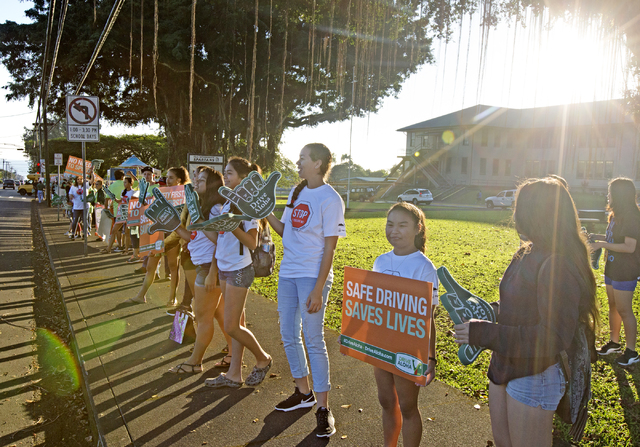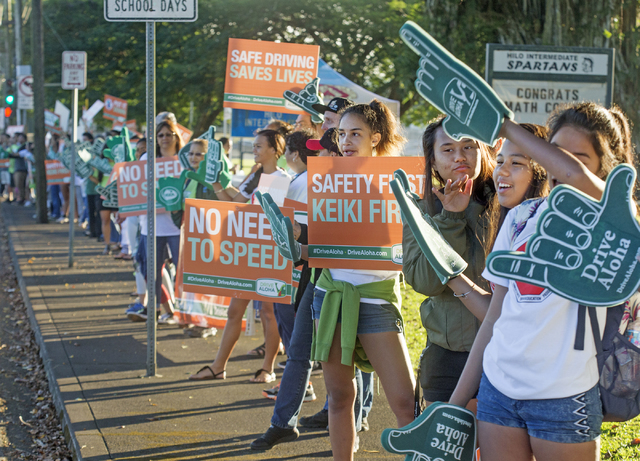HILO — When it comes to distracted driving, the statistics are sobering. ADVERTISING HILO — When it comes to distracted driving, the statistics are sobering. Roughly 100 people in Hawaii die each year in traffic accidents — an additional 20
HILO — When it comes to distracted driving, the statistics are sobering.
Roughly 100 people in Hawaii die each year in traffic accidents — an additional 20 to 30 killed by cars are pedestrians. Another dozen statewide are hit — and die — every year while riding bicycles or motorized scooters.
On Wednesday morning, about 125 students from Hilo High School, Hilo Intermediate School and Hilo Union Elementary School gathered along Waianuenue Avenue with foam shaka fingers and oversized signs reading, “Safety First Keiki First,” hoping to share a simple message with East Hawaii drivers: Pay attention and slow down.
It was part of a statewide traffic safety campaign called Drive Aloha. The DTRIC Insurance-sponsored campaign was launched last year on Oahu with a proclamation by Gov. David Ige. It aims to discourage bad habits while driving, such as using a cellphone, running red lights and speeding.
Wednesday’s hourlong, sign-waving event marked Drive Aloha’s debut on the Big Island.
Hilo Intermediate School staff member Rochelle Tamiya said about 75 seventh- and eighth-graders took part. She said it was an opportunity for the Hilo Intermediate students to “show unity with the (rest of the) complex area” and a chance for staff to instill in the young teens the importance of good driving habits, several years before most will actually get behind the wheel themselves.
“We try to tell the students, driving with aloha is not only not using your cellphone and paying attention on the roads,” Tamiya said. “It’s also letting people go, saying, ‘Thank you’, and tooting your horn when a car pulls on the other side.” It’s just about creating aloha, period.”
Hilo Intermediate seventh-grader John Tores was among those participating Wednesday. Tores said he enjoyed waving signs and hearing cars honk because “it showed everyone what we’re doing for them and … to be safe and drive with aloha.”
“(It’s important) because accidents happen, and people can die,” Tores said. “When they honk, it shows they really understand us and what we’re saying.”





